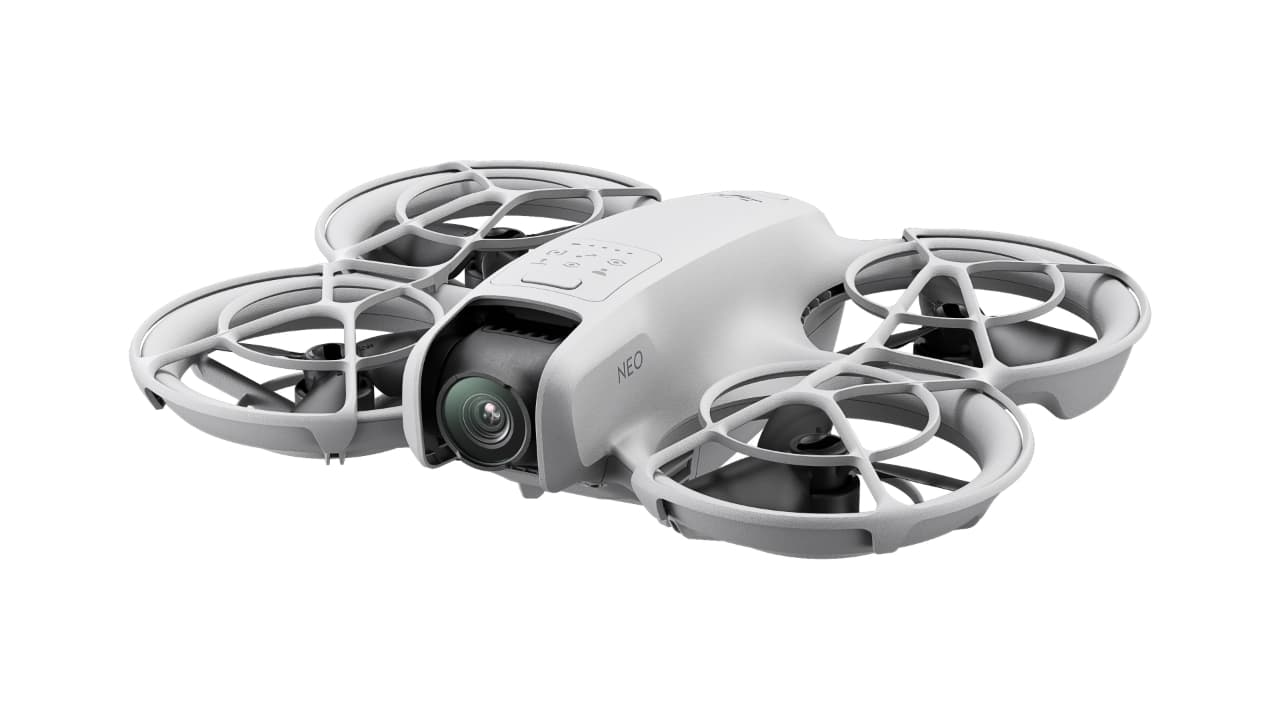
DJI has launched the Neo at IFA in Berlin, its smallest, lightest (and cheapest) drone to date, designed for easy vlogging and everyday video capture.
There was a Christmas a few years back when one of the main gadgets lots of people were gifted was some sort of remote control flying thing with propeller guards. They were a bit basic, tended to crash when subjected to the merest puff of wind, regularly veered off course, and had a battery life almost guaranteed to make anyone under the age of 12 weep (and a few over that age too - ahem).
DJI has basically just released the same thing. Only it’s added 4K video, 12MP stills, a whole host of AI powered automation, and generally made it less rubbish. In fact, the DJI Neo seems to be targeted squarely at a vlogging end of the market that might really appreciate an easy-to-use drone that can just create video without the need for much fiddling about in the background.
And at $199 it’s not a huge gamble either.

Key features
- Weighs just 135g (4.76 oz), making it DJI's most compact drone
- Can be controlled without a remote, launched and landed on the palm
- 4K30 video and 12MP stills from a 1/2-inch sensor
- Up to 18 minutes of flight time
- AI subject tracking and QuickShots automated flight modes
- Full propeller guards for safe indoor/outdoor use
- Single-axis gimbal with electronic stabilization
- 22GB internal storage
- Can be controlled via smartphone app, DJI controllers, or voice commands
- Starts at €199 for the base model
- Available now
DJI Neo: A lot to like
There is a lot to like here and it’s a clear response from DJI to the likes of HoverAir that have been trying to muscle in on its market with entry-level drones. The QuickShot flying modes feature six crowd pleasing routines — Dronie, Helix, Expanse, Circle, Rocket, Spotlight, and Boomerang — while AI tracking lets you capture follow shots quickly and simply. These can even be selected using a mode button on the drone and launched from the palm of your hand. The drone executes the command then returns to your palm, which is all fairly neat. Footage (MP4 recorded at a max bitrate of 75Mbps) can then be offloaded from the internal storage to your phone.
It can be controlled at base level via the DJI Fly app using virtual joysticks, or combined with the RC-N3 for more conventional remote control (as well as other DJI controllers, even including the DJI Goggles 3). You’re not going to be able to venture far using the app or the palm launch mode — max flight distance is 50m — but it is fast and easy to use.

That sort of trade off is present throughout the Neo though. Level 4 wind resistance (8 m/s) is impressive for something this size, but less than larger drones can tolerate, low light performance is probably not what many may have come to expect from larger image sensors, and that 18 minute battery performance was measured in ideal conditions. Stick the propeller guards on and it comes down to 17 minutes; add in wind and it’s likely even less. That means that you will be wanting to look at extra batteries as a minimum or one of the various combos available on the DJI Store that will bump the price up.
Add three batteries though and it still comes to only $289, which for all that it can do is not expensive. You get the feeling that drone-shaped Christmas presents this year are going to be a lot more impressive than they were just a handful of years ago.
tl;dr
- DJI has launched the DJI Neo, its smallest and lightest drone to date, designed for easy vlogging and everyday video capture.
- The DJI Neo offers 4K video, 12MP stills, AI subject tracking, QuickShot automated flight modes, and a flight time of up to 18 minutes.
- It weighs just 135g, can be controlled without a remote, and features full propeller guards for safe indoor/outdoor use.
- The DJI Neo is priced at $199 for the base model and is available now, offering a lot of impressive features at a relatively low cost.
Tags: Production Drones DJI


Comments